Among the sprawling biodiversity of Earth, there exists one reptilian ruler that stands above the rest—the Komodo dragon (Varanus komodoensis). Often referred to as the "King of Lizards," this colossal creature is the largest and most fearsome member of the lizard family, captivating scientists and nature enthusiasts alike with its raw power, ancient lineage, and terrifying predatory skills. Found only in the remote Indonesian islands of Komodo, Rinca, Flores, and a few others, the Komodo dragon reigns supreme as an apex predator in its domain. Let’s dive into the fascinating world of this awe-inspiring creature and explore why it rightfully deserves the title of "King of Lizards."
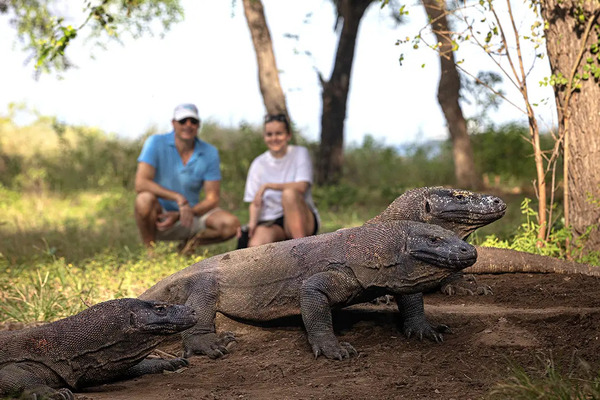
Komodo dragons are known for their staggering size, which is one of the primary reasons they are hailed as the kings of their reptilian brethren. Adult males can grow up to 10 feet (3 meters) in length and weigh over 200 pounds (90 kg). Females tend to be slightly smaller but are still formidable in their own right.
This immense size allows them to dominate their environment, with no natural predators standing in their way. Their muscular bodies and powerful limbs give them incredible strength, making them capable of taking down prey much larger than themselves.
As apex predators, Komodo dragons possess a terrifying combination of strength, speed, and intelligence, making them one of the most effective hunters in the animal kingdom. Despite their lumbering appearance, these lizards are remarkably fast, capable of sprinting up to 12 miles per hour (20 km/h) when chasing prey. Their hunting method relies on stealth and power, ambushing their prey with lightning-fast strikes before using their deadly jaws to deliver a fatal bite.
But what makes the Komodo dragon’s hunting technique truly horrifying is the presence of venom glands in their mouths. Long believed to rely on bacteria to infect their victims, scientists discovered that Komodo dragons actually produce venom that causes shock, excessive bleeding, and blood pressure drops, incapacitating their prey. Once bitten, the prey doesn’t stand a chance, often dying from blood loss or shock as the dragon follows patiently, waiting for the victim to collapse before feasting.
Komodo dragons are voracious carnivores, and their appetite matches their size. Their diet consists of large animals such as deer, wild boar, water buffalo, and occasionally smaller Komodo dragons. They are capable of consuming up to 80% of their body weight in one meal. Their powerful jaws and expandable stomachs allow them to swallow huge chunks of meat, bones and all, making them incredibly efficient predators.
One of the most striking feeding behaviors of Komodo dragons is their group feeding. When a large animal is brought down, multiple dragons will converge on the carcass, engaging in a feeding frenzy where each dragon fights for its share of the meal. Despite their solitary nature, they tolerate the presence of other dragons during these feeding sessions, though dominance is established by size and aggression.
The Komodo dragon is often called a "living dinosaur" due to its ancient lineage. These reptiles are direct descendants of prehistoric monitor lizards, which roamed the Earth millions of years ago during the age of dinosaurs. Komodo dragons have remained relatively unchanged for millions of years, making them a glimpse into the distant past and a living relic of the prehistoric world.
Their robust and resilient physiology has allowed them to survive and thrive in the harsh, arid environments of Indonesia’s islands, where few other large predators exist. Their ancient heritage is one of the many reasons the Komodo dragon holds such a special place in both scientific study and popular fascination.
The Komodo dragon’s ability to adapt to its environment is a key factor in its survival and success. Native to the isolated Lesser Sunda Islands in Indonesia, these dragons live in environments that are harsh, dry, and sparsely vegetated. Despite the seemingly inhospitable conditions, Komodo dragons have thrived.
They are opportunistic hunters and scavengers, feeding on carrion and live prey alike. Their ability to go weeks without food after a large meal gives them an edge in environments where food may be scarce. Moreover, they are excellent swimmers, allowing them to move between islands in search of prey or mates, which has further contributed to their continued survival.
One of the most surprising and mysterious aspects of the Komodo dragon is its ability to reproduce through a process known as parthenogenesis—a form of asexual reproduction where a female can lay viable eggs without mating with a male. This phenomenon was discovered in captivity when female Komodo dragons produced fertile eggs in the absence of males.
Parthenogenesis is an evolutionary adaptation that allows Komodo dragons to continue their species even in isolated environments where males may be scarce. This remarkable ability showcases the resilience of the species and its capacity to survive in challenging circumstances.
Despite their fearsome reputation and dominance as apex predators, Komodo dragons are considered vulnerable due to habitat loss, human encroachment, and a dwindling population of prey animals. The total population of Komodo dragons is estimated to be around 3,000 to 5,000 individuals, with their range restricted to only a few islands.
Conservation efforts are underway to protect these magnificent reptiles and their habitats. The Komodo National Park, established in 1980, has been critical in preserving the species by safeguarding their natural environment and minimizing human interference. However, the ongoing threat of climate change and human development continues to pose risks to the long-term survival of the Komodo dragon.
While Komodo dragons rarely attack humans, they are not to be underestimated. These creatures are curious by nature and have been known to approach humans, especially in areas where they have become accustomed to their presence. Komodo dragons have sharp claws, powerful tails, and venomous bites, making them dangerous when provoked.
There have been occasional reports of attacks on humans, particularly in situations where people have ventured too close to their territory or interrupted their feeding. Despite their fearsome reputation, Komodo dragons generally prefer to avoid human interaction unless provoked or hungry.
The Komodo dragon is an extraordinary creature, deserving of its title as the King of Lizards. With its massive size, deadly hunting techniques, ancient heritage, and incredible adaptability, the Komodo dragon represents one of nature’s most successful and awe-inspiring predators. As the world’s largest lizard, it stands as a symbol of power, resilience, and the mysteries of the natural world.
Despite the challenges of habitat loss and a vulnerable population, the Komodo dragon continues to captivate and terrify, reminding us of the incredible diversity and wonder of life on Earth. As conservation efforts strive to protect these modern-day monsters, the Komodo dragon’s reign as the king of lizards will hopefully continue for generations to come.
Here’s a detailed look at different types of lizards, their conservation status, combat capabilities, and size. These creatures range from small, nimble climbers to massive, fearsome predators. Lizards belong to a diverse group of reptiles that have evolved various defense mechanisms and hunting skills, depending on their habitat and ecological role. Below is a comparison of key species, highlighting their unique characteristics and protection levels.
| Lizard Species | Scientific Name | Size (Length & Weight) | Conservation Status (IUCN) | Combat/Defensive Capabilities | Habitat |
|---|---|---|---|---|---|
| Komodo Dragon | Varanus komodoensis | Up to 10 feet (3 meters), 200+ lbs (90 kg) | Vulnerable | Venomous bite, strong tail, sharp claws, ambush predator | Indonesia (Komodo, Rinca Islands) |
| Gila Monster | Heloderma suspectum | 1.3 - 2 feet (40-60 cm), 3-5 lbs (1.5-2 kg) | Near Threatened | Venomous bite, slow but strong, defensive posturing | Southwestern U.S. and Mexico |
| Green Iguana | Iguana iguana | Up to 6.6 feet (2 meters), 20 lbs (9 kg) | Least Concern | Whip-like tail, sharp claws, fast climber, can jump and swim | Central/South America, Caribbean |
| Marine Iguana | Amblyrhynchus cristatus | 4.5 - 5.5 feet (1.4-1.7 meters), 11 lbs (5 kg) | Vulnerable | Strong swimmer, powerful claws for climbing, can dive for food | Galápagos Islands |
| Thorny Devil | Moloch horridus | 8 inches (20 cm), 0.07 lbs (30 grams) | Least Concern | Camouflage, spiny armor, can drink water through skin capillaries | Australia |
| Nile Monitor | Varanus niloticus | 5.5 - 7 feet (1.6-2.1 meters), 20-30 lbs (9-14 kg) | Least Concern | Strong swimmer, sharp claws, powerful tail used as a whip | Sub-Saharan Africa |
| Frilled Lizard | Chlamydosaurus kingii | 2.5 - 3 feet (75-90 cm), 1.1 lbs (0.5 kg) | Least Concern | Frill used for intimidation, fast runner, can climb trees to escape | Australia, New Guinea |
| Gecko (Common species) | Gekkonidae family | 3 - 6 inches (7.5-15 cm), <0.1 lbs (varies) | Least Concern | Sticky toe pads for climbing, tail regeneration, nocturnal | Worldwide (tropical/subtropical) |
| Armadillo Girdled Lizard | Ouroborus cataphractus | 3.5 - 4.3 inches (9-11 cm), 1.2 ounces (35 g) | Vulnerable | Protective spiny scales, curls into a ball to protect soft underbelly | South Africa |
| Bearded Dragon | Pogona vitticeps | 18 - 24 inches (45-60 cm), 0.7-1 lb (0.3-0.5 kg) | Least Concern | Beard puffing, fast, can change color for thermoregulation and signaling | Australia |
Conservation Status: Vulnerable
Size: The largest living lizard, Komodo dragons can grow up to 10 feet (3 meters) long and weigh over 200 lbs (90 kg).
Combat/Defensive Capabilities: As an apex predator, the Komodo dragon is equipped with a venomous bite, sharp claws, and a muscular tail that can deliver strong blows. They use ambush tactics and are known to hunt large prey, including deer and water buffalo. Their venom causes shock and prevents blood clotting in prey, making them incredibly lethal.
Habitat: Found only on a few Indonesian islands, including Komodo and Rinca, these dragons live in dry, hot environments.
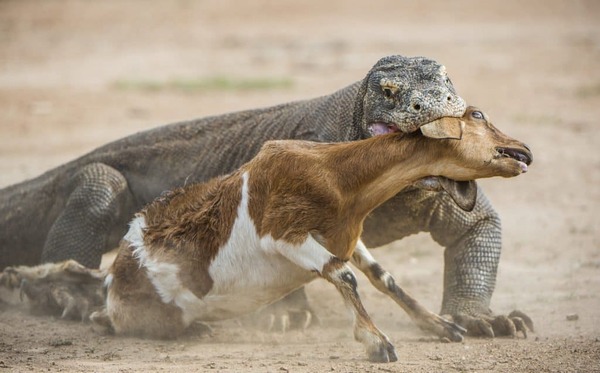
Conservation Status: Near Threatened
Size: Gila monsters are relatively small compared to the Komodo dragon, measuring 1.3 to 2 feet (40-60 cm) in length and weighing 3-5 lbs (1.5-2 kg).
Combat/Defensive Capabilities: Despite their slow movements, Gila monsters have venomous bites that can be extremely painful, though rarely fatal to humans. They defend themselves by hissing, puffing up their bodies, and delivering bites only when cornered.
Habitat: Found in arid regions of the southwestern United States and parts of Mexico, these reptiles live in deserts and semi-arid scrublands.
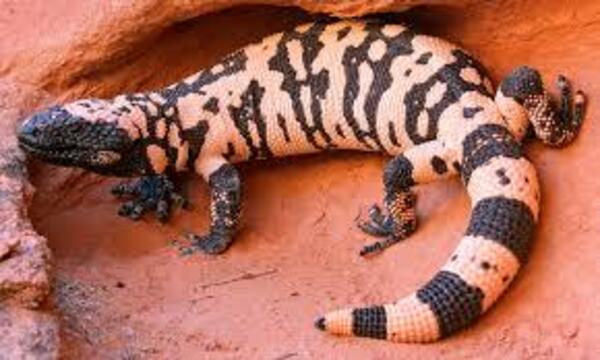
Conservation Status: Least Concern
Size: These large herbivorous lizards can grow up to 6.6 feet (2 meters) long and weigh around 20 lbs (9 kg).
Combat/Defensive Capabilities: While generally peaceful, green iguanas can defend themselves with their sharp claws and a powerful tail that they whip at predators. They are excellent climbers and swimmers, which helps them evade danger.
Habitat: Native to tropical rainforests in Central and South America, they are also found in the Caribbean and have become an invasive species in parts of Florida.
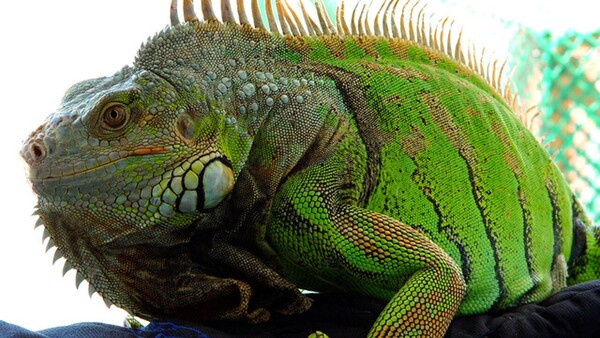
Conservation Status: Vulnerable
Size: Marine iguanas typically measure 4.5 to 5.5 feet (1.4-1.7 meters) in length and weigh around 11 lbs (5 kg).
Combat/Defensive Capabilities: These unique iguanas are excellent swimmers and divers, feeding primarily on algae. They have strong claws that allow them to grip onto rocky surfaces. When threatened, they can use their tails for defense.
Habitat: They are native to the Galápagos Islands and are the only lizards adapted to a marine environment.
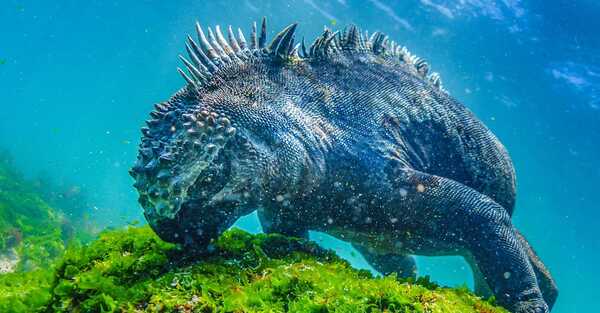
Conservation Status: Least Concern
Size: One of the smaller lizards, thorny devils grow up to 8 inches (20 cm) in length.
Combat/Defensive Capabilities: Their bodies are covered in sharp, thorn-like spikes that deter predators. Thorny devils also have an impressive ability to collect moisture through their skin and are camouflaged to blend into the desert environment.
Habitat: Native to the arid desert regions of Australia.
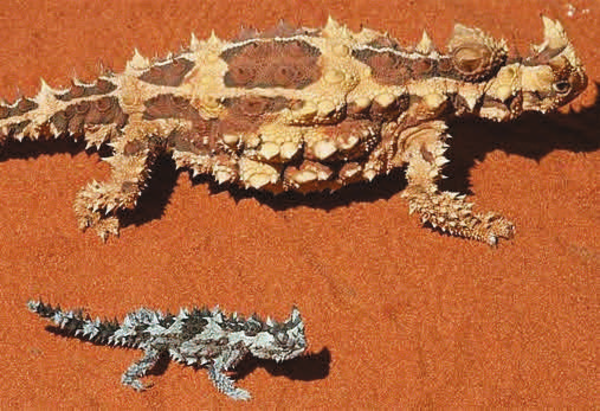
Conservation Status: Least Concern
Size: These large lizards grow between 5.5 and 7 feet (1.6-2.1 meters) and can weigh up to 30 lbs (14 kg).
Combat/Defensive Capabilities: Nile monitors are strong swimmers, with sharp claws and a powerful tail used for defense. They are aggressive predators and skilled hunters, often preying on fish, birds, and small mammals.
Habitat: Widespread across Sub-Saharan Africa, they are commonly found near rivers, lakes, and wetlands.
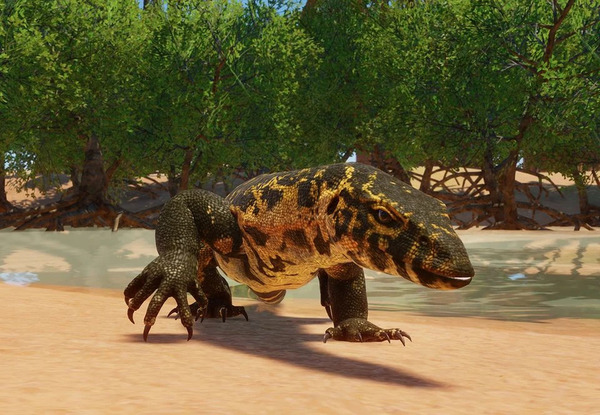
Conservation Status: Least Concern
Size: Frilled lizards measure 2.5 to 3 feet (75-90 cm) in length, weighing around 1.1 lbs (0.5 kg).
Combat/Defensive Capabilities: These lizards display a dramatic frill around their neck when threatened, making themselves appear larger to intimidate predators. They can also sprint on their hind legs to escape danger.
Habitat: Found in northern Australia and southern New Guinea, frilled lizards live in tropical and warm temperate forests.
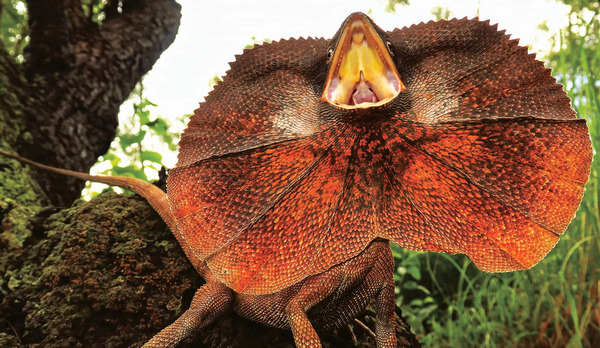
Conservation Status: Least Concern
Size: Geckos are typically small, ranging from 3 to 6 inches (7.5-15 cm) in length.
Combat/Defensive Capabilities: Geckos have sticky toe pads that allow them to climb smooth surfaces with ease. They can also shed their tails to escape predators.
Habitat: Found worldwide, geckos live in a variety of environments, including tropical forests, deserts, and urban areas.
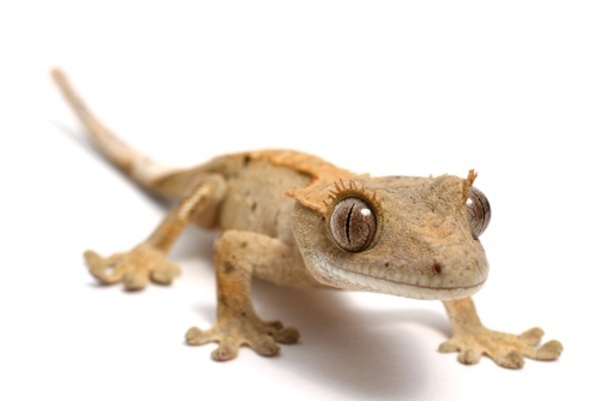
Conservation Status: Vulnerable
Size: Small, growing between 3.5 and 4.3 inches (9-11 cm) long.
Combat/Defensive Capabilities: This lizard has tough, spiny scales and can roll into a ball, similar to an armadillo, to protect its vulnerable underbelly from predators.
Habitat: Native to the deserts of South Africa.
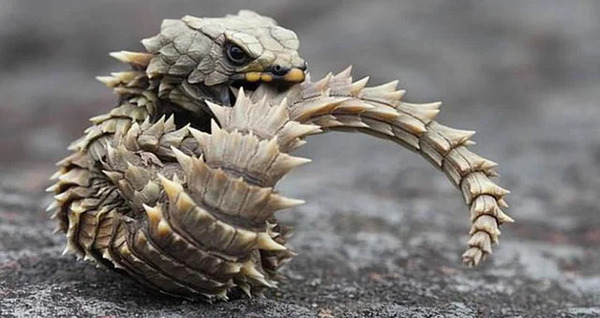
Conservation Status: Least Concern
Size: Bearded dragons can grow between 18 to 24 inches (45-60 cm) in length and weigh 0.7-1 lb (0.3-0.5 kg).
Combat/Defensive Capabilities: Bearded dragons puff out their throat “beard” to appear larger when threatened. They can also change color and are fast runners.
Habitat: Native to the arid, rocky deserts of Australia.
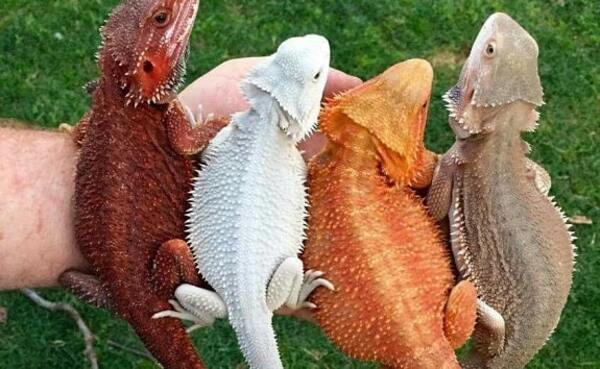
This table provides a broad comparison of lizard species, each with unique adaptations for survival, defense, and hunting. These reptiles are crucial to their ecosystems, but many are at risk due to habitat destruction, climate change, and human activity. Conservation efforts are vital for ensuring their continued survival.
animal tags: lizard
We created this article in conjunction with AI technology, then made sure it was fact-checked and edited by a Animals Top editor.